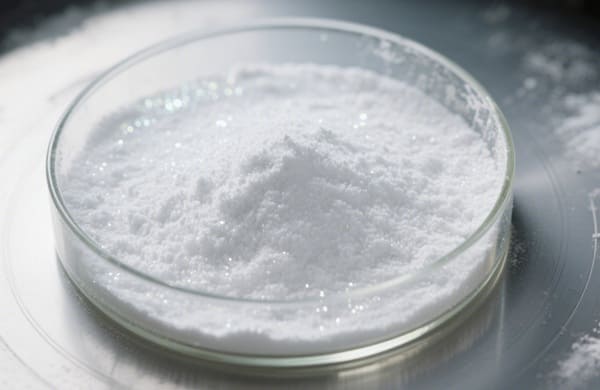Essential Techniques for Producing High-Quality Nano-Alumina
Nano-Alumina, a nanoscale form of aluminum oxide (Al₂O₃) with particle sizes typically ranging from 1 to 100 nanometers, is one of the most important advanced ceramic materials in modern industry. With its high surface area, exceptional mechanical hardness, chemical stability, and thermal resistance, it is widely used in aerospace, electronics, catalysis, and biomedical devices. Compared with conventional alumina, nano-alumina offers enhanced reactivity, better dispersion in composites, and customizable surface chemistry for specialized applications.
Producing high-quality nano-alumina demands precise control over particle size distribution, phase composition, purity, and surface characteristics. Even small deviations can reduce durability, create processing difficulties, or cause inconsistent performance. This article outlines the essential techniques for producing nano-alumina, covering synthesis methods, surface modification strategies, and comparisons with other ceramic materials. It also addresses common challenges and provides practical insights for engineers, researchers, and manufacturers.
At Advanced Ceramics Hub, we specialize in high-quality alumina products, ensuring optimal performance for industrial and scientific applications.

What Is Nano-Alumina and Why Is It Important?
Nano-Alumina refers to aluminum oxide particles engineered at the nanometer scale, where the extremely high surface area-to-volume ratio produces properties not observed in bulk alumina. With a Mohs hardness of 9 and a melting point exceeding 2000°C, it can endure extreme temperatures without losing structural integrity. Chemically inert in most environments, it also provides outstanding corrosion resistance.
This combination of hardness, stability, and surface reactivity makes nano-alumina a vital material in precision ceramics, thermal barrier coatings, high-performance composites, and catalyst supports. In electronics, it functions as a superior electrical insulator with high thermal conductivity, improving heat management. In catalysis, its large surface area and tunable surface chemistry significantly boost reaction rates and selectivity.
Key Properties of Nano-Alumina:
| Property | Typical Value | Benefit for Applications |
| Melting Point | ~2015°C | High-temperature stability |
| Mohs Hardness | 9 | Exceptional wear resistance |
| Particle Size Range | 10–100 nm | Enhanced reactivity and dispersion |
| Specific Surface Area | 50–300 m²/g | Improved catalytic performance |
| Electrical Resistivity | >10¹⁴ Ω·cm | Excellent electrical insulation |
In practice, these properties enable manufacturers to produce lightweight, high-strength, and chemically durable components for advanced applications. The exact property profile depends heavily on the production method, which is why process optimization is essential.
Explore our high-quality alumina products.
How Is Nano-Alumina Produced?
The production of nano-alumina can be categorized into solid-phase, liquid-phase, and gas-phase synthesis methods. Each approach offers specific advantages in terms of particle size control, purity, cost, and scalability.
Solid-phase synthesis relies on mechanical and thermal processes to transform raw materials into nano-powders, often favored for bulk industrial output. Liquid-phase synthesis, including precipitation and sol–gel methods, allows precise molecular-level control over composition and morphology, making it ideal for high-purity applications. Gas-phase synthesis, though more complex and costly, produces ultra-fine powders with superior uniformity.
Main Production Methods for Nano-Alumina:
| Method | Process Overview | Advantages | Limitations |
| Solid-Phase | High-energy milling, calcination | Low cost, high throughput | Agglomeration, lower purity |
| Liquid-Phase | Precipitation, sol–gel | Excellent control, high purity | Slower, possible contamination |
| Gas-Phase | Flame hydrolysis, evaporation-condensation | Very fine, uniform particles | High cost, complex equipment |
Selecting the right method depends on the intended application. For instance, catalyst manufacturers may prioritize high surface area over cost, favoring liquid-phase methods, while bulk ceramic producers may opt for solid-phase techniques to achieve large-scale output.
What Are the Steps in the Solid-Phase Method for Nano-Alumina?
The solid-phase method transforms solid precursors into nano-sized alumina through high-energy mechanical milling and thermal calcination. This approach is straightforward, requires relatively simple equipment, and is cost-effective for large-scale production. However, controlling agglomeration and achieving uniform particle size remain challenges.
Typical Solid-Phase Production Steps
- Select aluminum-containing raw materials (e.g., aluminum hydroxide, aluminum salts).
- Pre-calcine to remove moisture and volatile impurities.
- Use high-energy ball milling to reduce particle size and promote reactivity.
- Perform calcination at optimized temperatures to form desired alumina phases.
- Apply post-milling or dispersion treatments to improve uniformity.
While this method is highly scalable, the resulting powders often require additional surface modification to enhance dispersion in composite systems. Its primary advantage lies in its ability to produce large volumes at relatively low cost, making it suitable for refractory applications and structural ceramics.
How Does the Liquid-Phase Method Improve Nano-Alumina Quality?
The liquid-phase method produces nano-alumina by precipitating or condensing aluminum compounds from a solution, allowing precise control over particle size, shape, and chemical composition. This makes it ideal for applications requiring uniformity and high purity, such as optical ceramics and catalyst supports.
Comparison of Liquid-Phase Techniques:
| Technique | Description | Key Benefits | Challenges |
| Sol–Gel | Hydrolysis and polycondensation of aluminum alkoxides | Excellent control over size/shape | High precursor cost |
| Precipitation | Reaction of aluminum salts with precipitating agents | Scalable, cost-effective | Risk of uneven precipitation |
| Solvent Evap. | Controlled drying of metal salt solutions | Produces fine, uniform particles | Time-consuming process |
Liquid-phase methods also allow for doping with other elements during synthesis, enabling the production of functionalized nano-alumina with specific optical, electrical, or catalytic properties.
What Role Does Gas-Phase Synthesis Play in Nano-Alumina Production?
Gas-phase synthesis methods, such as flame hydrolysis and evaporation–condensation, involve vaporizing aluminum precursors and reacting them in a controlled atmosphere to form nano-sized alumina particles. These techniques produce extremely fine powders with narrow size distributions, making them valuable for high-tech applications.
Gas-Phase Methods Overview:
| Method | Process Description | Advantages | Limitations |
| Flame Hydrolysis | Reacting aluminum chloride vapor with oxygen/hydrogen flames | High purity, fine particles | High energy consumption |
| Evaporation–Cond. | Vaporizing Al₂O₃ and rapidly cooling | Uniform nanoscale powders | Complex, costly equipment |
Despite their advantages, gas-phase methods are rarely used for large-scale industrial production due to their high energy requirements and equipment complexity. They are best suited for niche applications demanding ultra-high purity and controlled morphology.
How Is Nano-Alumina Surface Modified to Improve Performance?
Surface modification is essential for preventing particle agglomeration and improving compatibility with various matrices, whether polymeric, metallic, or ceramic. Techniques range from purely physical dispersion methods to advanced chemical treatments.
Common Surface Modification Methods:
- Physical: High-shear mixing, ultrasonic dispersion, ball milling.
- Chemical: Silane coupling, polymer grafting, acid–base functionalization.
- Hybrid: Combining mechanical dispersion with chemical bonding agents.
| Method | Mechanism | Benefits |
| Ultrasonic Dispersion | Cavitation breaks clusters | Improves dispersion in liquids |
| Silane Coupling | Forms chemical bonds with surface hydroxyl groups | Enhances compatibility with resins |
| Polymer Grafting | Attaches polymer chains to the surface | Increases stability in composites |
Proper surface modification not only improves dispersion but also enhances mechanical bonding and thermal stability in final products.
How Does Nano-Alumina Compare with Other Ceramic Materials?
Nano-alumina competes with ceramics such as zirconia (ZrO₂), silicon carbide (SiC), and titanium dioxide (TiO₂). Each material has its strengths, but nano-alumina offers a unique combination of high hardness, stability, and affordability.
Comparison of Nano-Alumina with Other Ceramics:
| Material | Hardness (Mohs) | Thermal Stability | Electrical Conductivity | Relative Cost |
| Nano-Alumina | 9 | Excellent | Insulator | Low |
| Zirconia | 8 | Very Good | Insulator | High |
| Silicon Carbide | 9–9.5 | Excellent | Semiconductor | High |
| Titanium Dioxide | 5.5–6 | Good | Insulator | Moderate |
This balance of properties makes nano-alumina the preferred choice for applications that require mechanical durability, chemical resistance, and cost efficiency without sacrificing performance.
Request a custom quote for alumina products.
What Are the Key Challenges in Producing High-Quality Nano-Alumina?
Producing nano-alumina at an industrial scale involves overcoming technical and economic barriers, such as controlling agglomeration, ensuring purity, and minimizing production costs.
Production Challenges & Solutions:
| Challenge | Impact on Product | Solution Strategy |
| Agglomeration | Poor dispersion | Surface modification, ultrasonic processing |
| Contamination | Reduced purity | Use high-purity precursors, clean processing |
| Cost | Limits adoption | Process optimization, energy recovery |
| Phase Control | Inconsistent performance | Precision calcination control |
Addressing these challenges requires continuous R&D investment, advanced process control systems, and collaboration between material scientists and equipment engineers.
What Are the Future Trends in Nano-Alumina Production?
The demand for nano-alumina is expected to rise significantly as industries seek materials with superior thermal stability, mechanical strength, and chemical resistance. Future production trends will likely focus on sustainability, cost reduction, and functional customization to meet increasingly specialized requirements. Advancements in nanotechnology, process automation, and material engineering will enable more precise control over particle morphology, surface chemistry, and dispersion behavior, ensuring consistent quality in large-scale manufacturing.
Key Future Developments Expected in the Nano-Alumina Industry:
| Trend | Description | Potential Impact |
| Green and Sustainable Synthesis | Adoption of low-energy, waste-minimized processes using renewable precursors. | Reduces environmental footprint and meets regulatory standards. |
| Surface Functionalization for Targeted Applications | Advanced coating, doping, or hybrid material techniques to tailor performance. | Enables use in emerging sectors such as hydrogen storage and next-gen batteries. |
| High-Precision Manufacturing | AI-assisted process control for real-time adjustment of particle size and purity. | Improves consistency and lowers rejection rates. |
| Integration with Additive Manufacturing | Development of nano-alumina feedstocks for 3D printing of advanced ceramics. | Expands design flexibility in aerospace and biomedical devices. |
| Scalable Dispersion Technologies | Novel dispersants and processing systems for stable nanoparticle suspensions. | Enhances performance in composite materials. |
These trends suggest that nano-alumina will not only remain a key advanced ceramic material but will also evolve into more application-specific, environmentally friendly, and precisely engineered forms. This evolution will ensure its relevance in next-generation manufacturing and high-tech innovation.
FAQ
| Question | Answer |
| What is the primary use of nano-alumina? | Catalysts, ceramics, abrasives, and coatings. |
| Is nano-alumina toxic? | Generally safe, but avoid inhaling fine dust. |
| Can nano-alumina be made at home? | High-quality production requires industrial methods. |
| What makes nano-alumina different from regular alumina? | Smaller particle size, higher surface area, and unique reactivity. |
| How to store nano-alumina? | Keep in sealed, moisture-free containers. |
Conclusion
Nano-alumina’s exceptional hardness, stability, and reactivity make it an essential advanced ceramic for modern industry. Achieving consistent high quality requires careful selection of synthesis methods—whether solid-phase for cost efficiency, liquid-phase for precision, or gas-phase for ultra-fine purity—combined with effective surface modification to optimize dispersion and compatibility. Compared with other ceramics, nano-alumina offers an ideal balance between performance and cost, ensuring its continued relevance in electronics, catalysis, aerospace, and beyond. As processing technologies evolve, the scope of nano-alumina’s applications will expand even further, cementing its position as a cornerstone of high-performance materials engineering.
Looking for high-quality alumina products? Contact us today!
